Here, we observe Missouri River guide Beth Hood using a long handled net to capture a nice sized Missouri River Rainbow. Good form.
The team at Headhunters has noticed that net sales, questions and available options have all increased in the last couple of years. It seems that more and more anglers are using a net. Or maybe they are buying better nets that are more useable? Hopefully, an increased use of nets means a higher survival rate on released fish.
Now we have always sold a lot of nets to drift boat anglers. If you fish from a drift boat, you must use a net. There’s really no other way to land a fish unharmed without pulling over to the bank. In fact without a net in the boat, you really don’t land much. I have proven this to many clients over the years by forgetting my boat net. Typically on my first guide trip of the year.
For years the most popular ‘boat net’ on the Missouri has been the big, black extendable Ranger boat net with a rubber bag. Personally, I hate them. They are way too big, they fall apart in a few days, requiring the liberal use of JB Weld, screws and duct tape. I’m sure you’ve seen Missouri River guides ‘stabbing’ fish 10 feet from the boat, which also annoys me.
Here’s the big ugly:
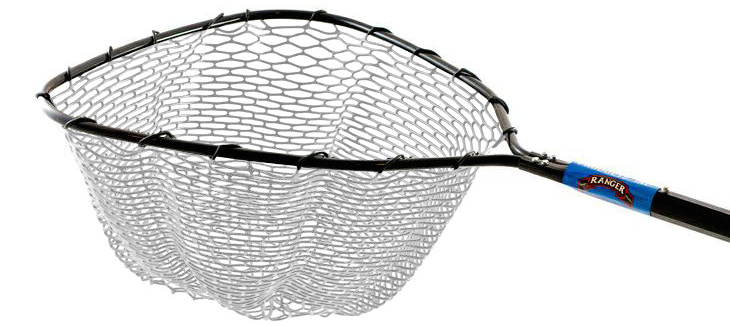
Although I would never use one of these, I understand why you would. It’s long and big. And the rubber net is good for the fish. They lie nice and flat in it, and are easy to release without handling them. We got plenty in stock if you need one.
Your clients don’t actually have to have any fish fighting skills, and they’re cheaper than better nets at $80 (sometimes less at scummy big box stores).
My personal net is an S2 from Jackson Hole called the Big Al (this is not the way inferior EGO S2 slider POS net you see in big box stores). Mine is about 10 years old and still going strong. It’s welded aluminum with a rubberized bag that is long and deep. In fact Beth is using it in the above image.
It’s a tough and quiet net, that fits in any boat without being in the way. For a long time I considered it the only high quality boat net that wasn’t made out of wood. The only problem was that it cost $220, which is(was) more than most were willing to spend. (I’ve had many arguments about my $220 net lasting 10+ years versus others who buy an $80 Ranger every year)
S2 also made some ‘mid-sized’ nets that blurred the line between a hang-off-your-back net and a bigger boat model. These are the kind of nets used by some wade fishing guides, and they really are useful for smaller streams and fish. I carry one of these when I’m rafting on the Blackfoot and Dearborn.
S2 has disappeared (at least I can no longer find them online), but several others have stepped in to fill the $200 high-end boat net niche.
Two we’re carrying in the shop are the Fishpond Nomad Series, and the newer Rising Aluminum Net. These are both very well made nets, although we can’t speak to the long-term durability of the Rising model as it’s newer.
The RISING ALUMINUM NET is the right size for me. I would rather have a net that stays out of my way, than a longer reaching one that we are tripping over all day long. You’re supposed to land them, not intercept them half way to the boat.
This net appears to be well made. There is a machined screw that secures the hoop. No rivets like the bass crowd uses. It uses a clear rubber net that is lightweight (one problem with light aluminum nets is that a heavy rubber bag can make them hard to single hand).
The end of the handle screws off, revealing a watertight ‘flask’. I’m not joking. if you see someone who looks like he doing shots out of his net handle this summer, it’s a Rising.
They come in some cool colors, which is cool. I really like this net so far. Time will tell how durable it is. At $129, however, 3-4 years would make me more than happy.
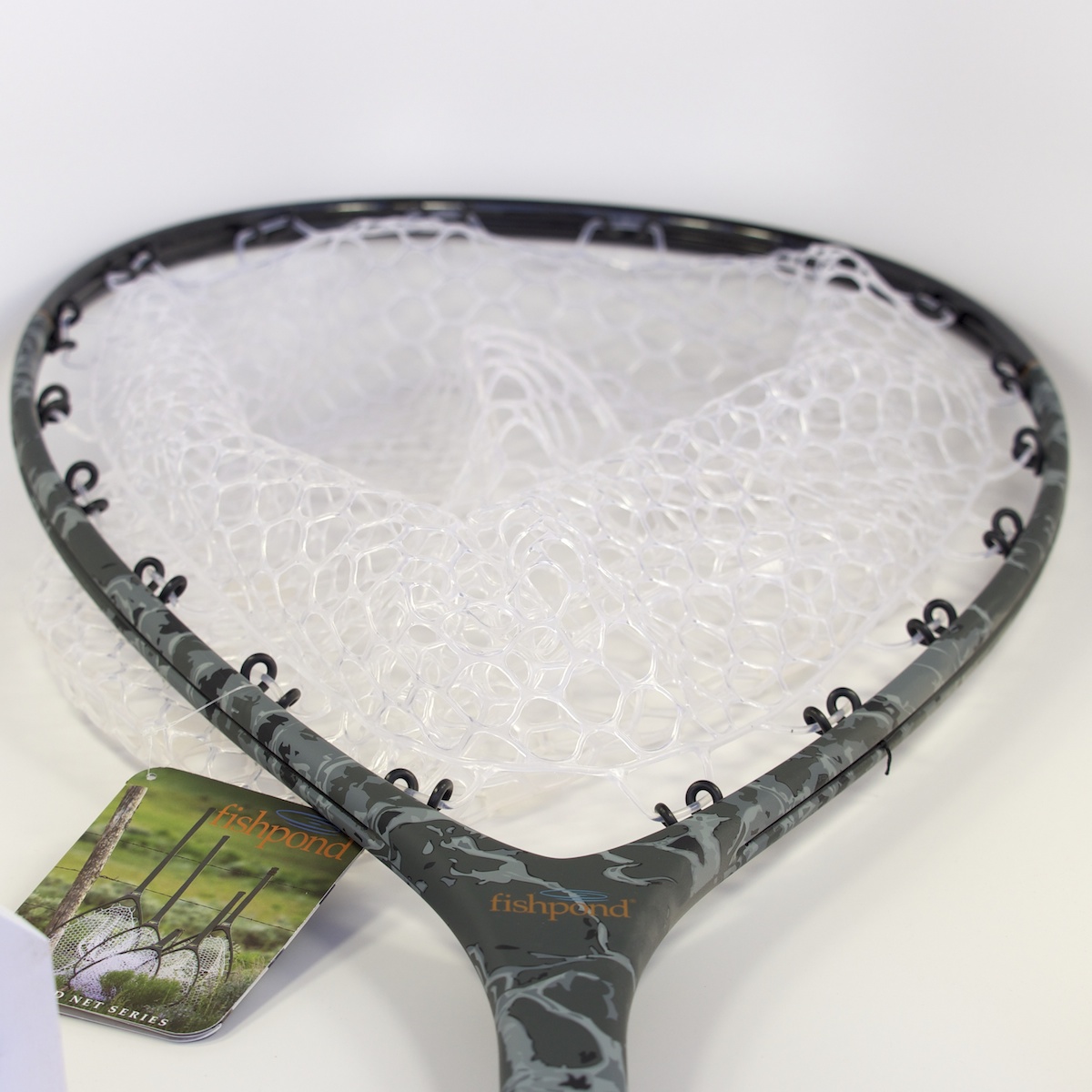
The FISHPOND NOMAD nets have been around a few years. First as just Nomad, then associated with Fishpond after being acquired by the Colorado bag maker.
These are one piece composite construction that has a thin rubberized coating making them grippy. Clear rubber bags are used on all models, and there are a bunch. These come in a wide variety of sizes from small wading nets, to boat nets 55″ long.
These have proven to be light and durable nets. You can chip off the coating it you treat them like a guide, but it has no effect on the net itself. They also come in a variety of camo-esque patterns. Cool-esque.
The boat-sized Fishpond nets run $200-229. Expensive, but from what I’ve seen worth it. With they achieve 10 year status like the S2? Only time will tell. We sold quite a few Fishpond Nomad nets last summer. Getting popular. Camo.
We also carry wood nets from Blue Ribbon, including the Guide Boat net. We definitely sell more hand nets than boat nets in wood. The Blue Ribbon boat nets seems durable – at least I’ve never heard otherwise – but i’ve never liked the HUGE round hoop on wooden boat nets. Takes up so much more room in the boat than it need to. I much prefer the long narrow hoops of modern nets. You know me. New school.
KEEP ‘EM WET CAMPAIGN
So if I haven’t sold you on the use of a net yet, maybe the Native Fish Society will. They have been promoting the Keep ‘Em Wet Campaign with anglers hash tagging photos on social media with #keepemwet. Lots of prizes!
If you post pictures on Facebook or Instagram holding fish in the air this year, people are going to make fun of you. This is serious. The best way to take that fish in the water photo is with a net under him.
I’ve definitely seen the blog community getting behind the #keepemwet campaign. Great to see the proper handling of fish get some ink (pixels, I guess). The use of a net is an important aspect of proper fish handling, especially for those fishing out of a boat. Use the net to release the fish please!
And here’s Beth Hood #keepemwet.
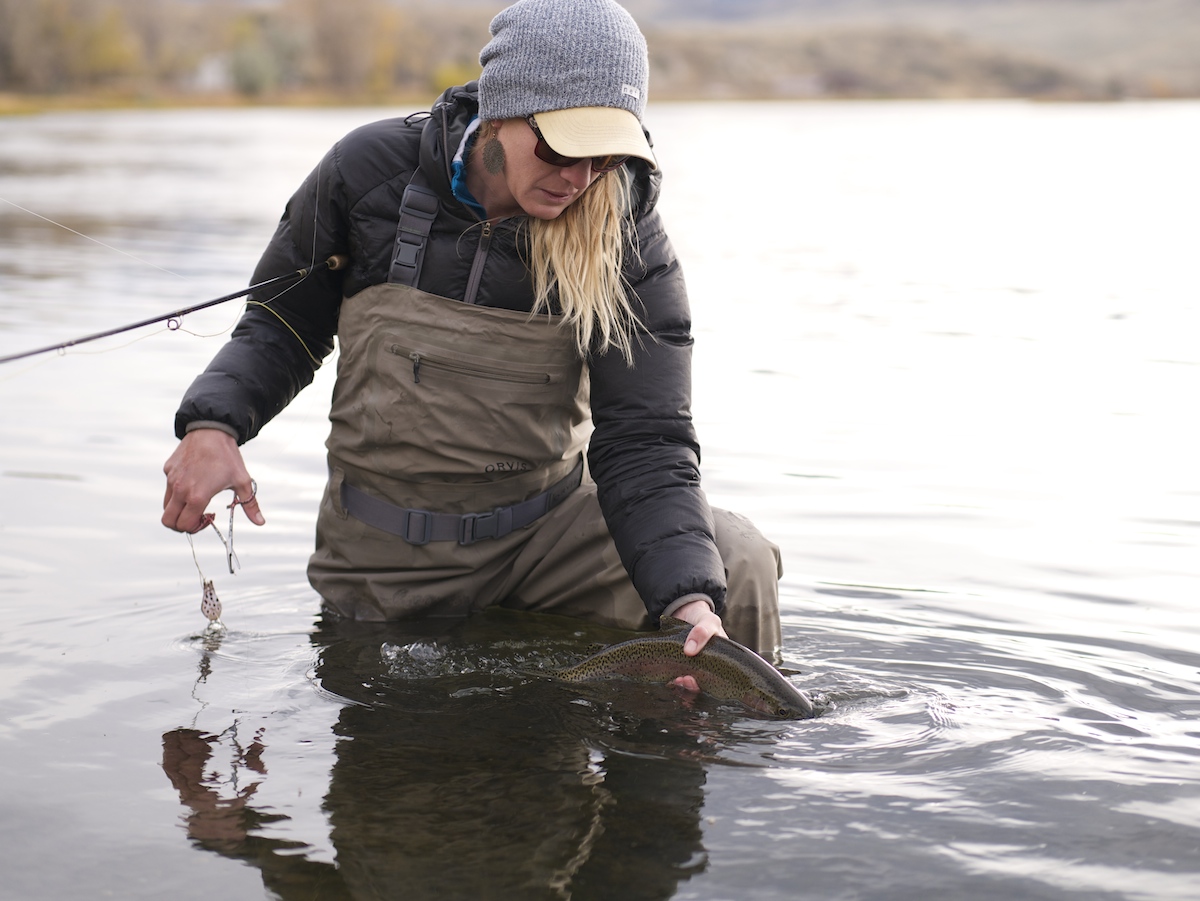


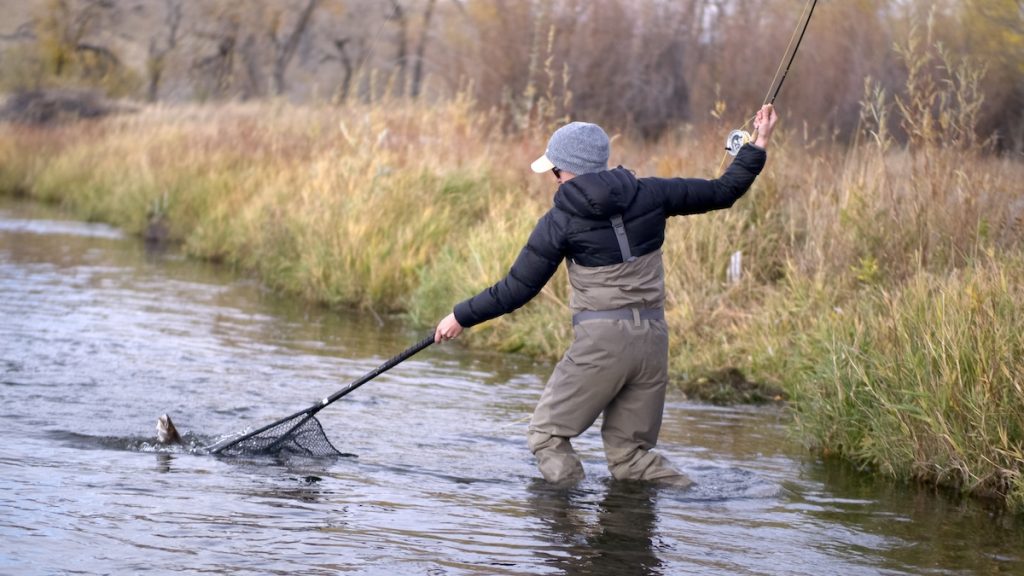
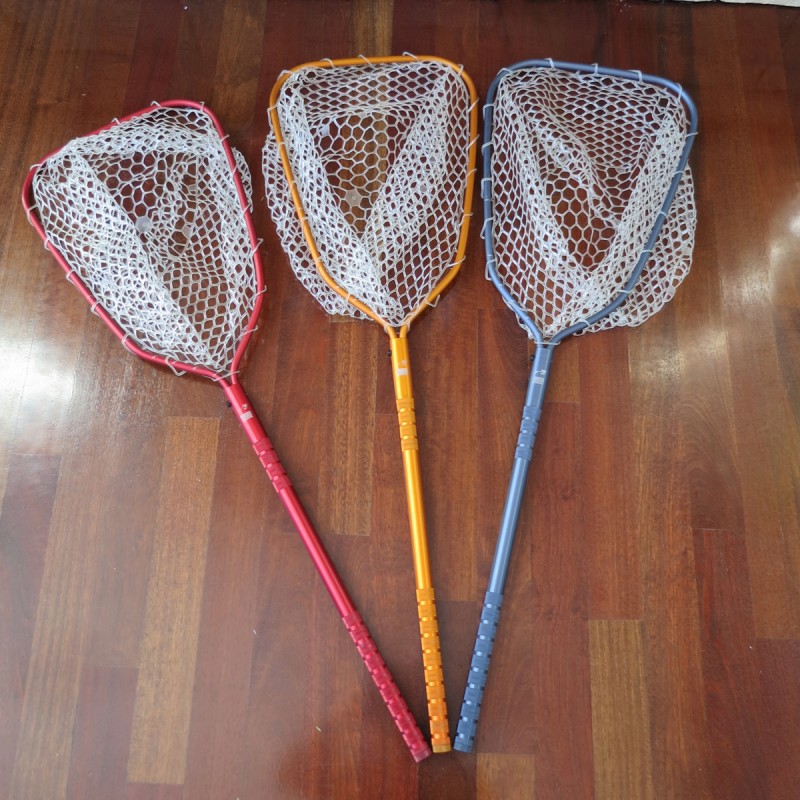
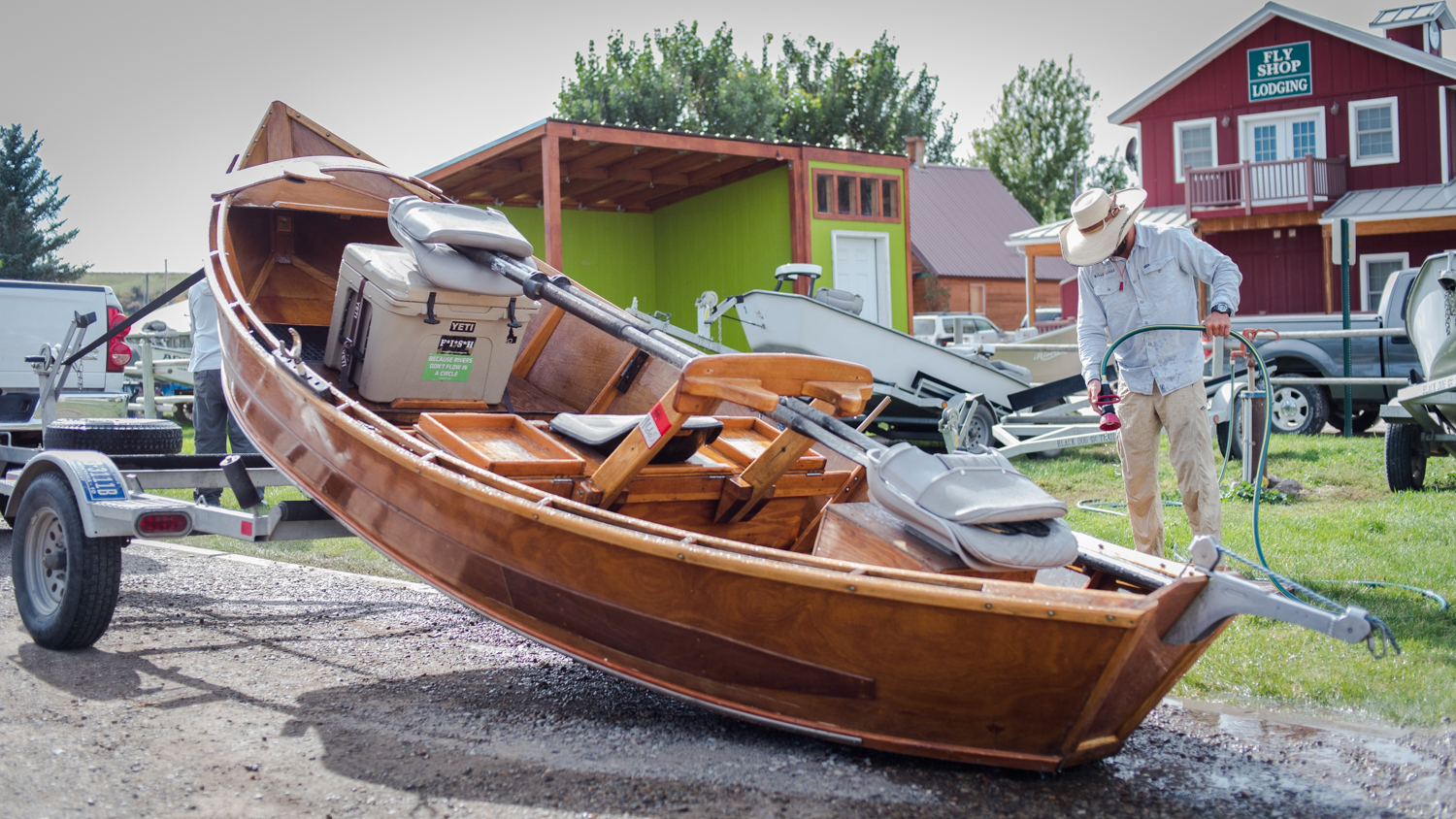
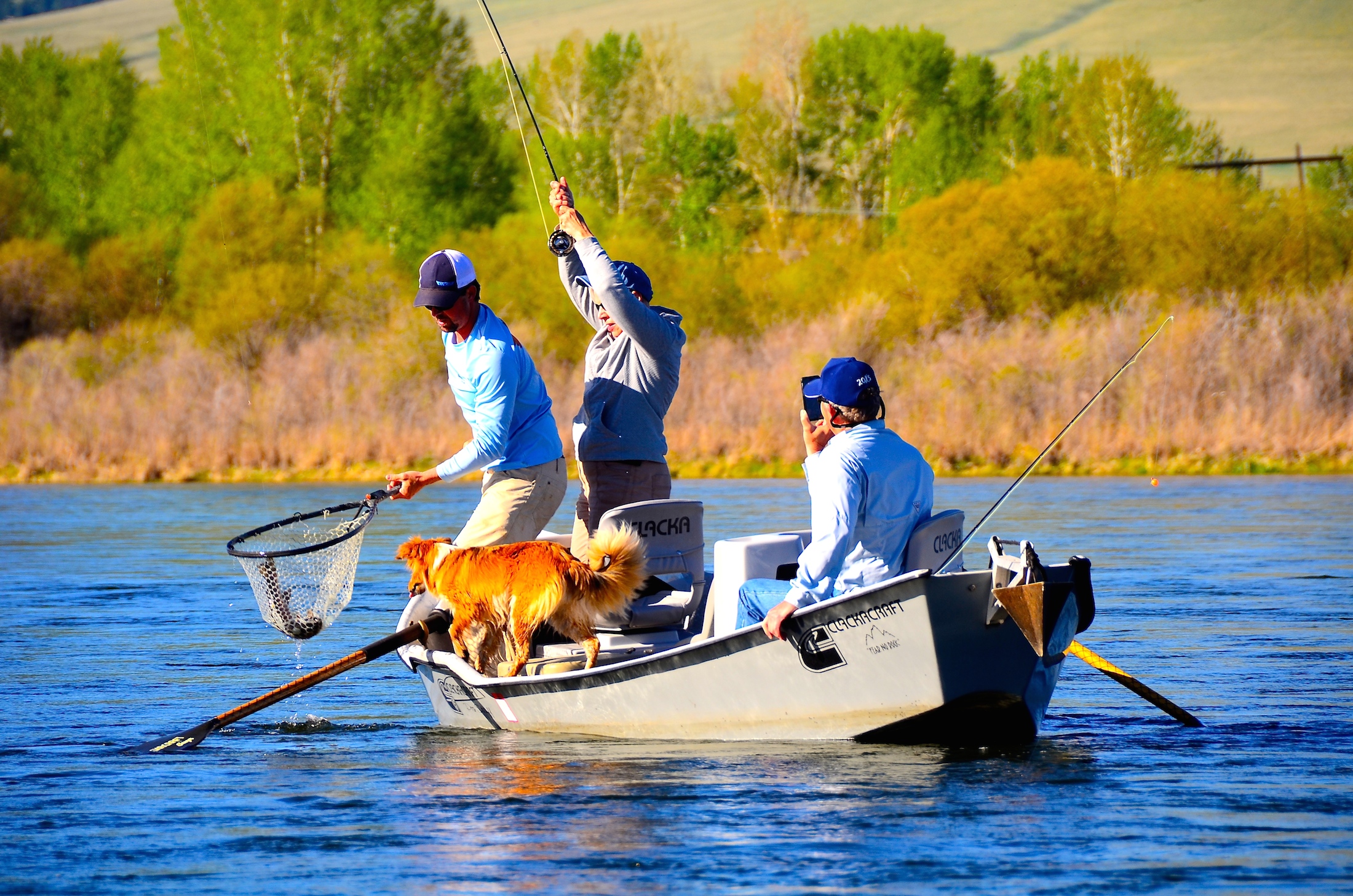

3 Comments.
Glad to see you endorsing keepemwet! I am beyond tired of seeing those endless streams of videos (whole ‘other issue) showing people who should know better holding fish up at chest or eye height for endless periods to show the camera. Dudes, I see them! I have seen a fish before, don’t need 15 seconds of this torture. Keepemwet!
I like your attitude.
[…] https://www.headhuntersflyshop.com/2015-year-of-the-net/ […]